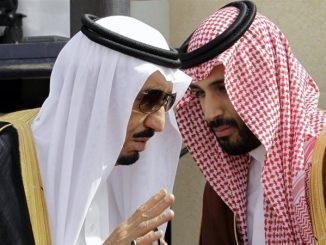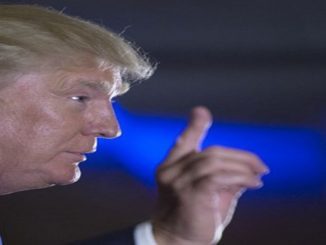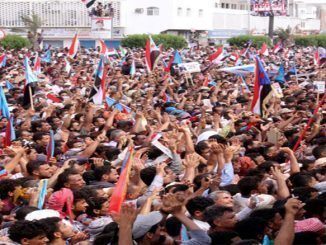
A persistent narrative about Saudi Arabia describes the country as in perpetual struggle between the forces of modernity and the forces of traditionalism. This paper contributes to the on-going evaluation of this paradigm and its shortcomings. It proposes a model based on understanding domestic politics and its dependence on outside approval to understand the ‘revolutionary transformation’ of Muhammad Bin Salman
Introduction
The dominant narrative through which many observers understand Saudi Arabia depicts a progressive and modernist leadership struggling to gradually transform an allegedly conservative and traditional society. The amplified divide between the modernists, often believed to be consisting of the princes and their western-educated technocrats on the one hand, and the traditionalists, a large cohort of religious clerics, tribes, and almost everybody else in Saudi Arabia on the other, fails to provide a robust analytical framework to understand Saudi Arabia. However, this persistent narrative has made the country an enigma, not only in its Arab neighbourhood, but across the Muslim world.
The alleged binary opposition between Saudi modernists and traditionalists persists for purely political reasons. The narrative is a convenient paradigm that shows the country as blessed by enlightened leadership which, in the past, had been crippled by the vast sea of Saudi conservatism, traditionalism, and, by implication, backwardness. This paradigm had become the foundation for regime propaganda. Its advocates are not only outside observers, but also many Saudi intellectuals.
Since the invention of the divide between tradition and modernity in development studies in the 1950s and 1960s, (1)the Saudi leadership itself promoted this narrative to justify delaying urgent change such as the ban on women’s driving, mixing between the sexes, and, above all, dismissing all calls for representative government and political participation. The leadership and many Saudi intellectuals previously argued, “Saudis are not ready for such drastic and revolutionary change.” This meant that, in both politics and social issues, the conservatism of Saudi society was an impediment to modernisation and progress.
If the princes are the bearers of modernity, who or what is responsible for the persistence of an alleged traditionalism? (2)Three elements are often cited as underpinning the conservatism of Saudi society: religion, tribalism, and culture. Even when the leadership patronised Wahhabi Islam and endeared its advocates, it simultaneously blamed them for being obstacles to social change. The classic examples are the clerics’ objections to the introduction of cars, telegram, television, girls’ mass education, satellite dishes, and many other modern inventions. (3) It must be mentioned that all such opposition was limited to a minority of clerics. But the opposition has become a mythical legend to demonstrate the conservatism of such religious scholars.
The implication is that the Saudi leadership should not proceed to transform society at such speed lest the clerics are antagonised and contemplate a revolt. However, many observers fail to mention that those who objected to change were products of state-sponsored religious institutions in the country. The leadership need them to create acquiescence and legitimacy. The double talk of the leadership meant that a schizophrenic situation existed in which the leadership needed the clerics, but condemned or allowed other Saudis to condemn their interpretations. Many previous monarchs said they did not want to antagonise the conservative clerics, thus delaying urgent rights for citizens that go beyond the gadgets of modernity.
The second alleged obstacle to transformation is often believed to be the pervasive and persistent tribalism of Saudi society. A misrepresentation and misunderstanding of tribalism and its pervasiveness in the country are clearly behind this assertion. Saudi society is not unique in its tribal organisation since many people in the Arab region adhere to a tribal genealogy and ethos. In the Arabian Peninsula, and even in North Africa, the tribe continues to be an organising centre for many people. This tribalism has not prevented women in the Gulf from driving cars earlier than their Saudi counterparts, nor has it prevented the introduction of elected parliaments in countries such as Jordan, Yemen, and Kuwait; all have substantial tribal constituencies.
Therefore, tribalism alone cannot explain conservatism as it should be considered a variable in conjunction with other important factors. But, many Saudi intellectuals do not consider the country ready for national elections or political parties because, they claim, people will immediately jump on the opportunity and exercise a despised and dangerous political tribalism, thus leading to hijacking the state. Such commentators forget that the state is responsible for enhancing tribalism as it maintains a ban on civil society, thus allowing people to maintain tribal connections at the expense of developing class- or ideologically-based associations.
Finally, a general conservative culture is believed to dominate society through the persistence of traditional norms and values. The persistence of endogamous tribal marriages, honour killing, nepotism, and other cultural practices are believed to form a stubborn cultural conservatism that has to be transformed from above in order for Saudi Arabia to become modern. This misguided static understanding of culture, inspired by the tradition versus modernity paradigm, paves the way and justifies top-down social engineering. It deprives Saudi society of agency and renders it sterile and awaiting transformation from above, always under the guidance of the leadership and its several modernisation initiatives.
However, the model fails to account for cultural variations and certainly does not consider the importance of individual initiatives by non-state actors who adopt new norms and patterns of behaviour different from the ones allowed to be expressed in public. Moreover, it does not explain how powerful state political actors and agencies control culture ensuring that it remains static, which explains why certain aspects of Saudi culture have remained unchanged while others have evolved and mutated. Culture does not develop in a vacuum, but is subjected to the logic of power and state control, especially in a country where authoritarian rule persists.
The New Narrative
Since the new crown prince, Muhammad Bin Salman, amassed all powers in his hands in 2015, emerging as the sole face of Saudi Arabia, a new narrative about his visionary top-down social engineering and revolution and his bold courage to shake the traditionalism and conservatism of Saudi society is being consolidated. (4) The more the country is depicted as conservative, the more the Prince emerges as a young and brave revolutionary reformer. Commentators are obsessed by anticipating the reaction of the conservative forces, and the backlash and the revolt among the pillars of backwardness. We are told that he silenced all traditional critical voices, including, above all, the bastions of traditionalism: religious clerics who are constructed as obstacles to social openness – of the type he has recently introduced. He is constructed as “moving swiftly” to bring Saudi Arabia into the twenty-first century. Again, in this new version of the old narrative, he is, of course, the visionary modernist silencing traditional voices.
Examples of the Prince’s modernism include, among other things, allowing women to drive and join the military, increasing female employment, opening cinemas, theatres, and concert halls, and “making Saudi Arabia a normal country”, akin to its Gulf neighbours. (5) But if the history of the state in the twentieth century is considered, the new prince has not in fact deviated much from the policies of previous kings when it comes to magnifying the visionary aspects of leadership and overestimating the resistance of reactionary forces in society. What is different now is the level of propaganda and outside interest that magnify the scope of the transformation and its revolutionary impact on Saudi Arabia.
Beyond Tradition and Modernity
To understand Saudi Arabia, we need to go beyond the defunct binary opposition model that anticipates a perpetual struggle between modernists and traditionalists.
Such divides are illusory in all societies, and it is better to propose a continuum rather than stark divides between tradition and modernity.
Like all human societies, Saudi Arabia had, and will continue to have, a mixture of modernists and traditionalists with the understanding that someone can be both a modernist and a traditionalist at the same time while others will always escape readymade classifications as they combine contradictory impulses, inclinations and orientations in their beliefs and practices.
To illustrate, a Saudi prince like Muhammad Bin Salman can fully support lifting the ban on women driving and allow his wife to drive, but can, at the same time, oppose his daughter choosing to marry a Saudi commoner and be content to keep his wife away from the public gaze. Is such a person a traditionalist or a modernist? Moreover, he can promise women employment in the military services, but be vehemently opposed to granting Saudis the right to a representative government, a national council, and freedom of speech and assembly.
Equally, a Saudi cleric like Salman al-Awdah (6) and reformers such as Abdullah al-Hamid may recognise that cultural norms require some women to cover their faces in certain milieu, and acknowledge that there is theological diversity among religious scholars with regard to this requirement, (7) yet call for the consolidation of civil society, and consider it a duty to protect society from the excesses of power. They believe in free elections for all, representative government, and the right to depose a ruler through peaceful means such as strikes, demonstrations, and sit-ins. Al-Awdah, in particular, justifies peaceful revolution from an Islamic Sunni viewpoint, contrary to the insistence of the official Saudi Salafi tradition that it represents “khurij ala al-hakim”, rebellion against the ruler. Is such a cleric traditional or modern?
The complexity of these cases makes the obsolete paradigm of tradition versus modernity analytically limited. The interpretation of Saudi transformation calls for different analytical tools.
A Different paradigm: Centrality of power
To demystify Saudi Arabia and explain why it lagged behind in social and political transformation until Muhammad Bin Salman allegedly revolutionised it, we need to admit that, in the past, society had been transformed in ways that were drastic, challenging and even dangerous. This all happened before the crown prince occupied the stage of power, monopolised decision-making processes, and shaped policies. Since 2015, Saudi transformational processes have been directly linked to power and politics.
Power, politics, and rogue liberalism
Muhammad Bin Salman’s imposed changes are directly linked to his securing the throne by abandoning the horizontal succession pattern in which kingship moved from one brother to another among the eligible sons of Ibn Saud, the kingdom’s founder. Under King Salman, succession was swiftly changed to a vertical pattern in which kingship is monopolised by his son, Muhammad, and, thereafter, the latter’s sons.
Muhammad Bin Salman is neither a traditionalist nor a modernist. He is an aspiring prince who happened to be chosen by his father to exclude all other contenders and emerge as the undisputed ruler of Saudi Arabia. To consolidate his power, he is compelled to present himself to the outside world as an “enlightened modernist” who had domesticated the traditional forces in Saudi Arabia. From the co-optation of elites; detention of princes, religious scholars, and economic entrepreneurs; to appealing to the youth by promising employment, entertainment, and fun, he constructs himself as the ultimate modernist who replaces his old Nokia phone with a smart one.
Shrinking the public sphere
Co-optation alone may not be sufficient to consolidate the crown prince’s rule. Repression is probably more efficient in the short term. Since September 2017, he endeavoured to silence all domestic critical voices, beginning with a widespread detention campaign that incarcerated hundreds of intellectuals, economists, lawyers, writers and religious scholars. By November, several senior princes and members of the business elite found themselves in detention, albeit in Riyadh’s Ritz Carlton. (8)
Nobody knows whether there is an end to the detention storm that gripped the attention of Saudi Arabia, foreign governments, and the global investment community. Yet, it is certain that freedom of expression has now been even more curtailed than previously. From controlling the press and punishing transgressing journalists to monopolising social media and criminalising critical opinions, Muhammad Bin Salman has succeeded in emptying the public sphere of any critical opinions and debate. The Saudi public sphere has become so dull that no reflections on current policies are allowed.
Articles about domestic issues and regional and international affairs in the local press must follow the official line; supporting economic policies, social novelties and the entertainment industry is now compulsory; critical opinions of Israel – previously allowed – are now taboo. (9)The war on Yemen is equally a taboo topic should a writer doubt its logic and results. Relations with the USA must be praised and the restoration of intimate connections with the Trump administration should be depicted as resulting from the shrewd thinking and diplomatic efforts of the crown prince.
The upheavals and repression since 2015 suggest that the crown prince’s attempts to secure the throne pushed him to adopt a rogue and selective liberalism, mistakenly depicted as modernity. The leadership does not anticipate a revolution from above in which corruption, transparency, recourse to justice, and the rule of law are projects high on his agenda. His anti-corruption campaign proved to be a limited exercise, albeit theatrical and dramatic, serving only the interests of the crown prince, who is short of money to finance his megalomaniacal economic projects and to eliminate potential economic and military rivals from among his cousins and the old economic elite.
The international dimension
In the domestic struggle for power, the prince is also compelled to secure his throne internationally. (10) The global dimension of this struggle is extremely important to explain why he opened Saudi Arabia to outside cultural influences, allowing women certain limited freedoms and promising youth new entertainment venues. Since the 9/11 attacks in New York, the global community had exerted much pressure on Saudi Arabia to alter its dark image as the bastion of conservatism and the ideological incubator of terrorism.
Therefore, much of the prince’s “reforms” are directed to the outside world, particularly western governments and, above all, the USA. That is why the lifting of the ban on women driving was first announced in Washington. This leads us to conclude that securing the Saudi throne is not simply a domestic matter but is also a global concern, and any contender needs to endear a consortium of western powers in order to guarantee his success and the durability of his rule.
Dealing with authoritarianism in the Arab world, the international community has always relied on repressive rulers who present themselves as the guardians of secular states against the tide of Sunni radicalism in its al-Qa’ida and Islamic State group versions. With the political demise of Egypt’s Hosni Mubarak and Tunisia’s Zine El Abidine Ben Ali, among others, new authoritarian leaders are emerging to fill the vacuum. Muhammad Bin Salman and his partners in the UAE, Egypt, Bahrain (and other less important leaders) are constantly vying to play the role in Arab societies of the guardians of the secular realm against the forces of radicalisation, darkness and terrorism.
Muhammad Bin Salman aspires to become the eliminator of “radicalism” not only among Sunni Muslims but also Shi’a Islamism, seen as spread by Iran to undermine security and peace in the Arab world. Therefore, his “liberal reforms” are destined to be seen as steps towards achieving this goal, thus emerging as the best cherished leader in western capitals, from Washington to London.
The analysis of how the throne is secured and the requirements to secure it domestically and internationally allow us to focus attention on the mechanisms of currently-unfolding Saudi power and politics rather than invoking a defunct model of modernity versus tradition. Power monopoly helps better explain the dynamics of transformation currently occurring in Saudi Arabia.
Conclusion
Like other societies, Saudi Arabia is neither an enigma nor a unique case of traditionalism resisting modernity. If there is anything unique about its history and present, it should be located in the way its politics is conducted by a minority of actors whose number is dramatically decreasing. Under Muhammad ben Salman, the country has become a one-man show. His policies are neither a function of consensus among royalty nor even consultation with key actors in Saudi society. His policies stem from his desire to consolidate his power and emerge as the undisputed leader of a country with vast resources.
The project to consolidate his power needs the implementation of a new superficial and rogue liberalism. This is currently being imposed on society and hailed as a great top-down transformation based on the thinking of a young, determined and courageous reformer. The narrative depicts him as a modernist conducting social engineering in a very conservative and traditional society. (11) I argue against such a defunct model, and propose another paradigm based on understanding the mechanism behind consolidating the throne domestically.
This article was first published by AlJazeera Centre for Studies
References
(1) D. Lerner proposed the first application of the model in the middle East, see http://www.uq.edu.au/ccsc/the-passing-
(2) King Faysal was hailed as a modernist, see Joseph Kechichian, Faysal: a King for all Seasons, 2008. He also considered King Abdullah as a reformer, see https://www.aljazeera.com/indepth/opinion/
(3) For critical analysis of these gender issues, see M. Al-Rasheed, a Most Masculine State, 2013.
(4) See M. Al-Rasheed, Salman’s Legacy, 2017.
(5) In 2016, Crown Prince Muhammad ben Salman stated that society is not ready to accept lifting the ban on driving but in 2017 it suddenly became ready. See https://www.independent.co.uk/news/world/
(6) See M. Al-Rasheed, Divine Politics Reconsidered, 2015 http://eprints.lse.ac.uk/62240/
(7) See M. Al-Rasheed, Muted Modernists, 2015.
(8) Lyse Doucet, “Inside Saudi Arabia’s gilded prison at Riyadh Ritz-Carlton”, BBC, Novermber 23, 2017 http://www.bbc.co.uk/news/av/world-middle-
(9) Aljazeera News, “Activist detained after questioning Saudi-Israel tie”, February 9, 2018 https://www.aljazeera.com/news/2018/
(10) On king Salman and his son’s recent outreach to the US, see M. Al-Rasheed, King Salman and His Son: Winning the US and Losing the Rest, 2017, http://eprints.lse.ac.uk/84283/



